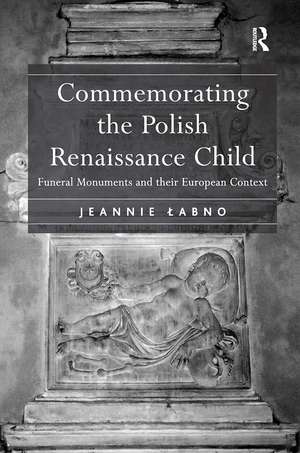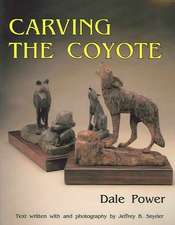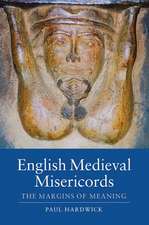Commemorating the Polish Renaissance Child: Funeral Monuments and their European Context
Autor Jeannie Labnoen Limba Engleză Paperback – 14 oct 2024
| Toate formatele și edițiile | Preț | Express |
|---|---|---|
| Paperback (1) | 268.42 lei 43-57 zile | |
| Taylor & Francis – 14 oct 2024 | 268.42 lei 43-57 zile | |
| Hardback (1) | 1054.71 lei 43-57 zile | |
| Taylor & Francis – 28 mai 2011 | 1054.71 lei 43-57 zile |
Preț: 268.42 lei
Preț vechi: 308.33 lei
-13% Nou
Puncte Express: 403
Preț estimativ în valută:
51.36€ • 53.77$ • 42.50£
51.36€ • 53.77$ • 42.50£
Carte tipărită la comandă
Livrare economică 07-21 aprilie
Preluare comenzi: 021 569.72.76
Specificații
ISBN-13: 9781032919546
ISBN-10: 103291954X
Pagini: 472
Dimensiuni: 156 x 234 mm
Greutate: 0.87 kg
Ediția:1
Editura: Taylor & Francis
Colecția Routledge
Locul publicării:Oxford, United Kingdom
ISBN-10: 103291954X
Pagini: 472
Dimensiuni: 156 x 234 mm
Greutate: 0.87 kg
Ediția:1
Editura: Taylor & Francis
Colecția Routledge
Locul publicării:Oxford, United Kingdom
Public țintă
AcademicCuprins
Contents: Introduction; Part I Context: Shifting the Boundaries, Conceptual Identities and the Social Framework: Shifting boundaries and conceptual identities; Religion in Poland: 'a state without stakes'; Society; Summary part I. Part II Locating a Forgotten Renaissance: Borders, boundaries and barriers; Processes of Renaissance reception in Poland; Pathways of dissemination of artistic motifs: the putto and skull; Summary part II. Part III Culture of Death: In Memoria: Death and commemoration; Death and the child; Summary part III. Part IV The Monumental Body of the Renaissance Child: The monumental body of the Renaissance child: trends and patterns; The monumental body of the Renaissance child: the changing putto; The monumental body of the Renaissance child: other forms of visual presentation; Summary part IV. Part V The Polish Putto-and-Skull: Iconography and Iconology: The Polish putto-and-skull: iconographic layers of significance; The Polish putto-and-skull: rudiments of laughter, grotesque bodies and mythic boundaries; Conclusions; Catalogue; Appendices; Bibliography; Index.
Notă biografică
Jeannie Labno is an independent art historian specialising in early modern art and culture of Central/Eastern Europe. She has published a number of papers, and the University of Warsaw has recently published the proceedings of an international conference she organised in 2007 at the University of Sussex: East Meets West at the Crossroads of Early Modern Europe.
Recenzii
’... this is a valuable contribution to the literature on the commemoration of children, and should be read by all who are interested in early modern commemoration.’ Church Monuments 'Jeannie Åabno’s multifaceted effort offers more than a standard art history perspective on a heretofore sparsely analyzed niche of peripheric Renaissance art. At its core the book distorts the entire center-periphery paradigm, embracing a model of pan-European Renaissance artistic receptiveness that is more a creative dialogue between two geographical points than a strict lecture from one to the other.' Renaissance Quarterly 'Commemorating the Polish Renaissance Child is a fascinating, engrossing study, which also presents a panoramic view of the Polish Renaissance, and Labno has the ability to shift from a specific to a more general perspective with ease. Her native familiarity with the subject and her ability to maintain a scientific, dispassionate distance, is an unquestionable merit of this work.' European History Quarterly 'With this fascinating book, Jeannie Åabno, drawing on a set of such traditions, but also on scholarly traditions of essentially different origin, has taken the first difficult step to open the communication in a new field. Others will hopefully follow.' Childhood in the Past 'Åabno’s book is important to the study of the early modern period in two ways. First, it highlights the profound diffusion and adaptation of the Renaissance in central and eastern Europe. ... Secondly, Åabno’s work is an important contribution to our understanding of childhood in the early modern period.' Sixteenth Century Journal
Descriere
Through an exploration of the unique Polish tradition of child commemoration, this book raises issues beyond the monuments themselves, about Polish social life and family structuring in the early modern period, including attitudes to children and the position of women, as well as the transmission and reception of Renaissance ideas outside Italy. Dr











